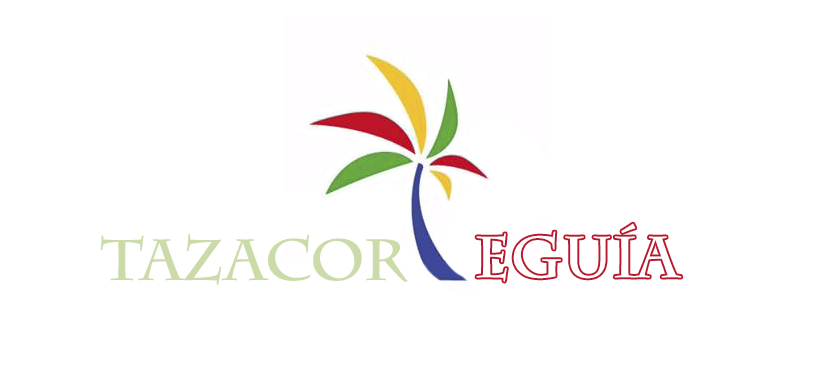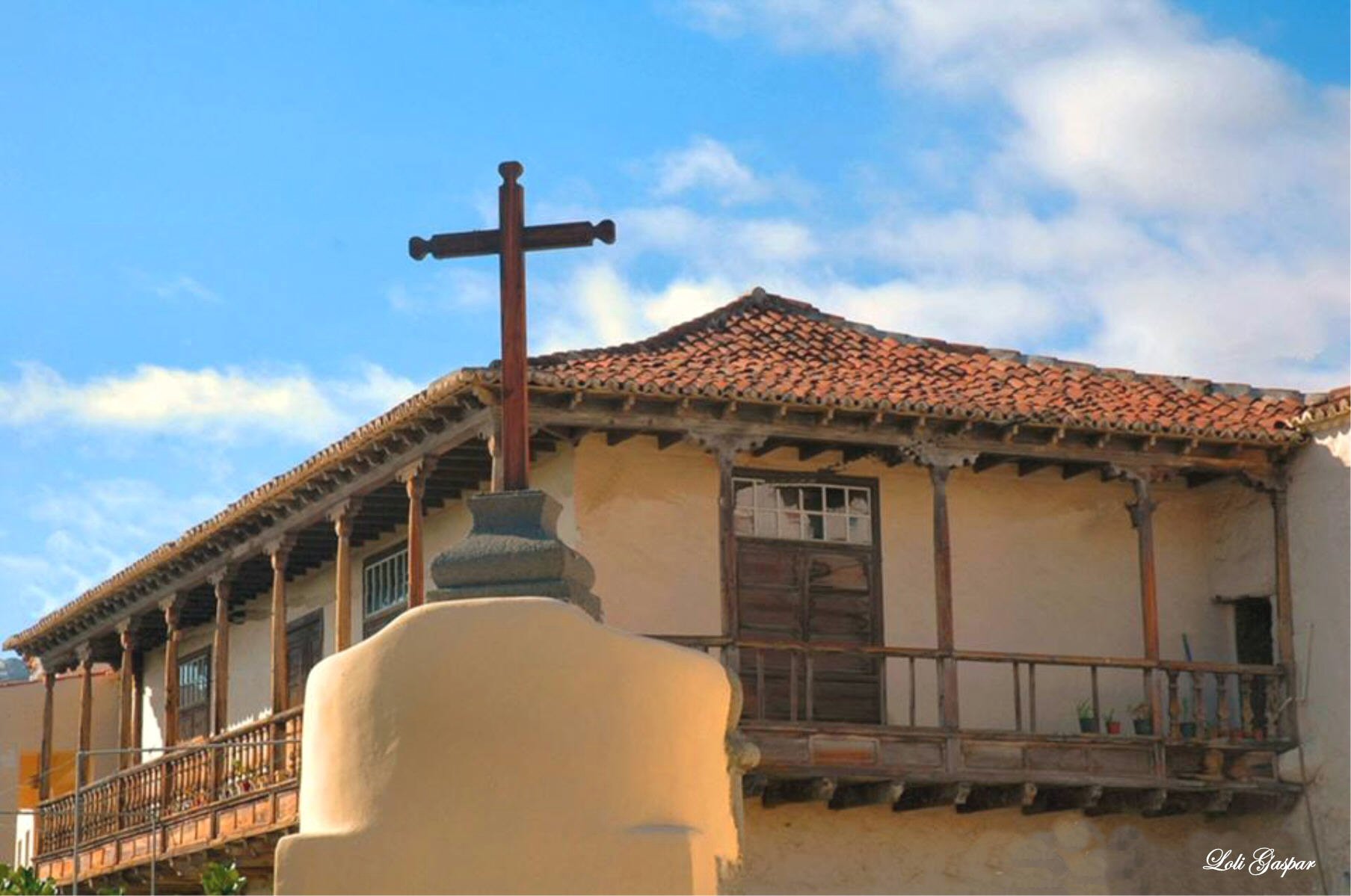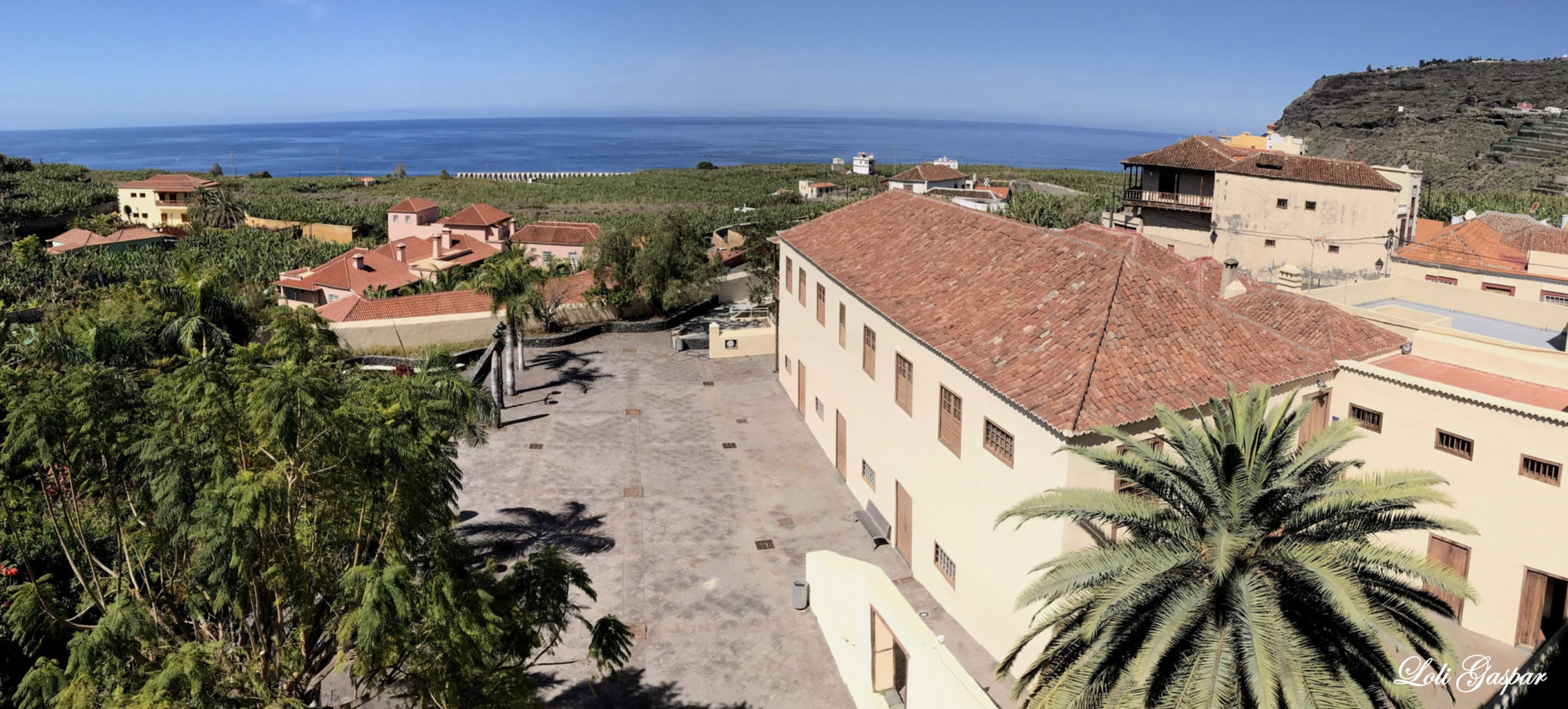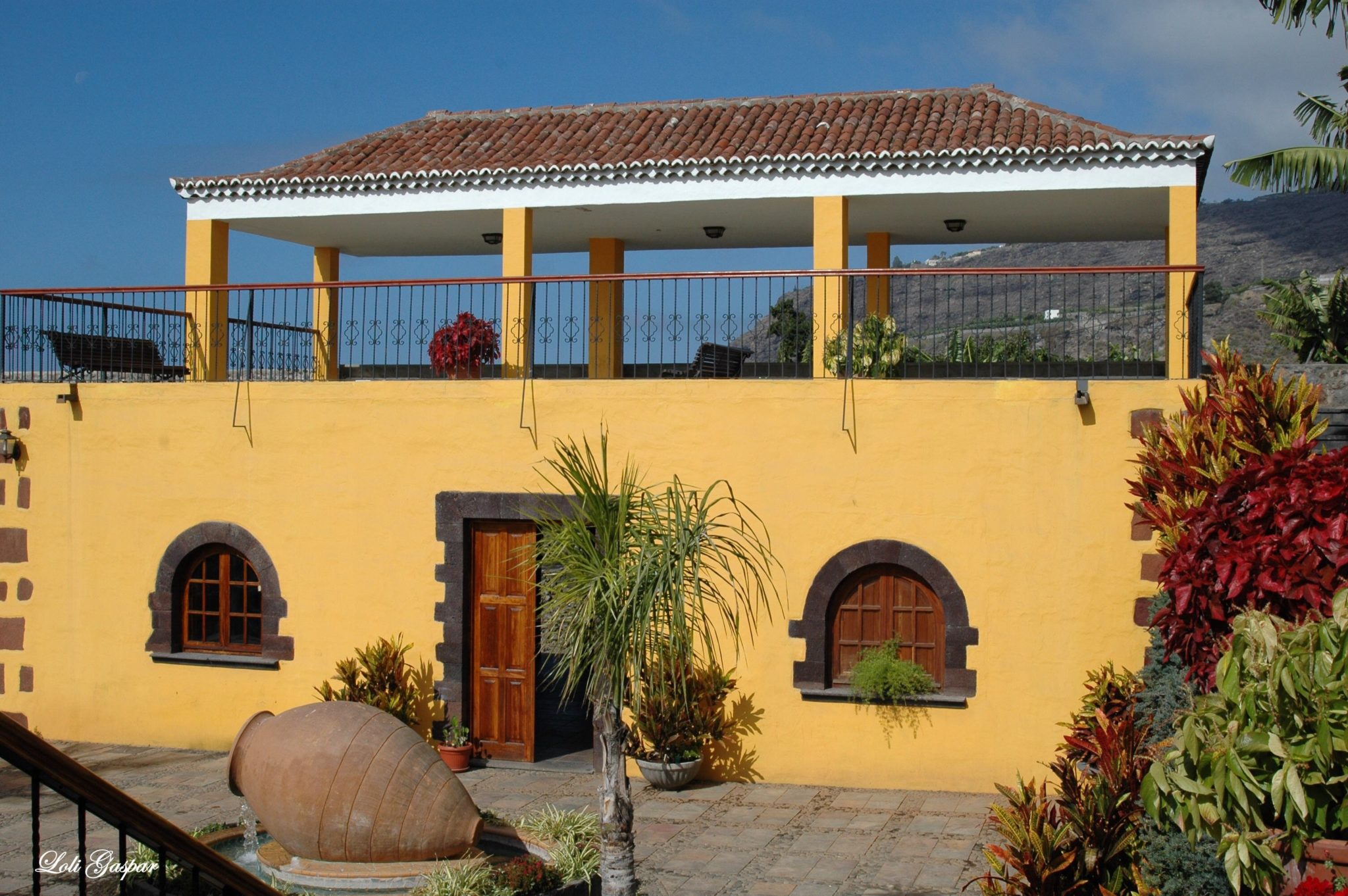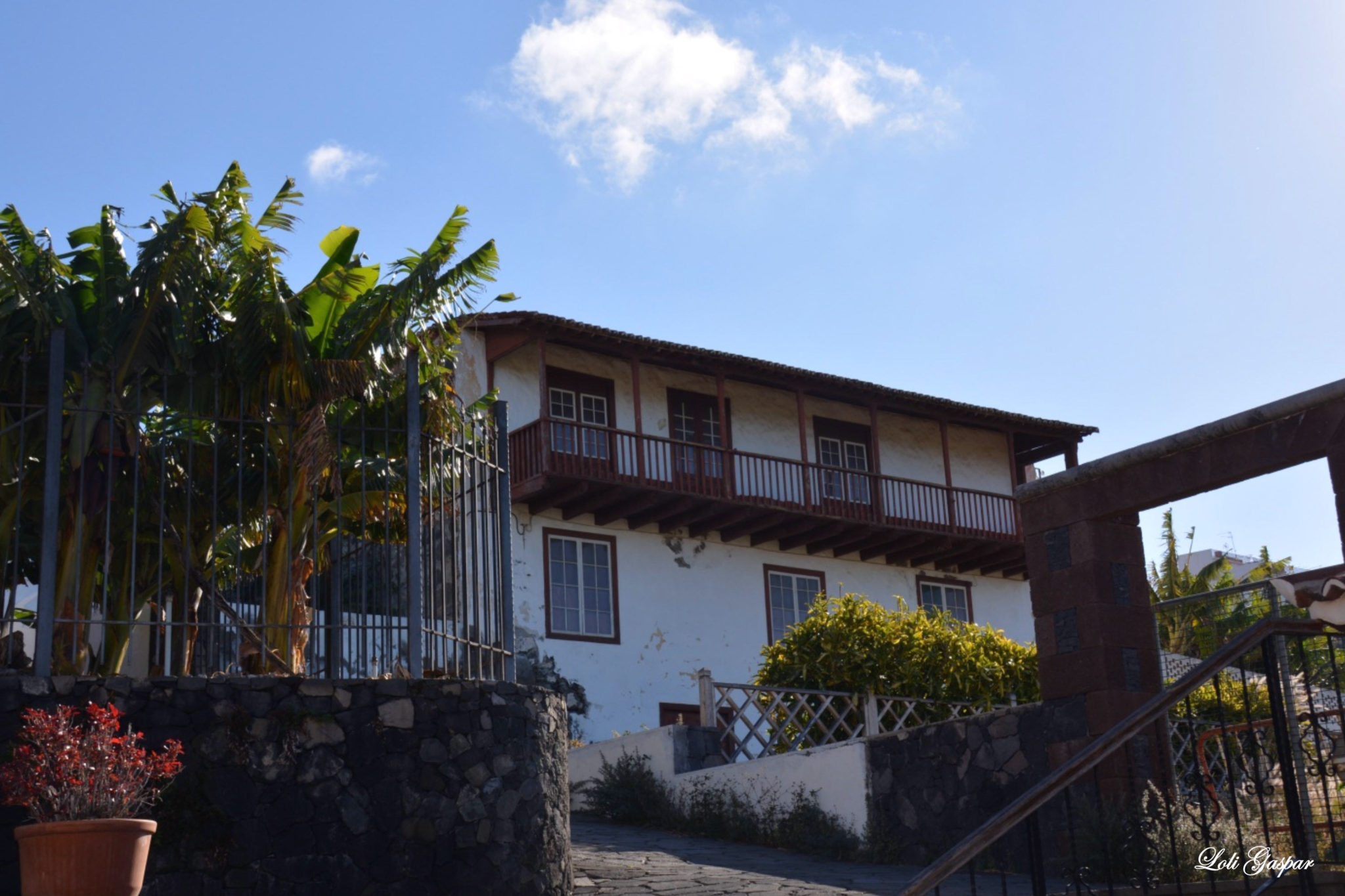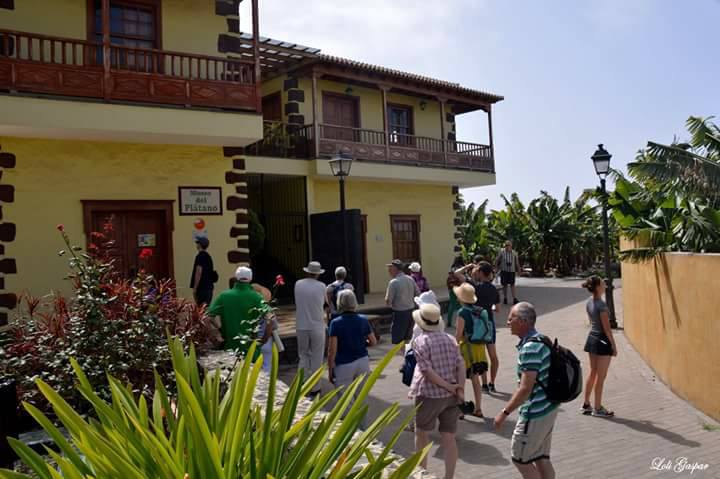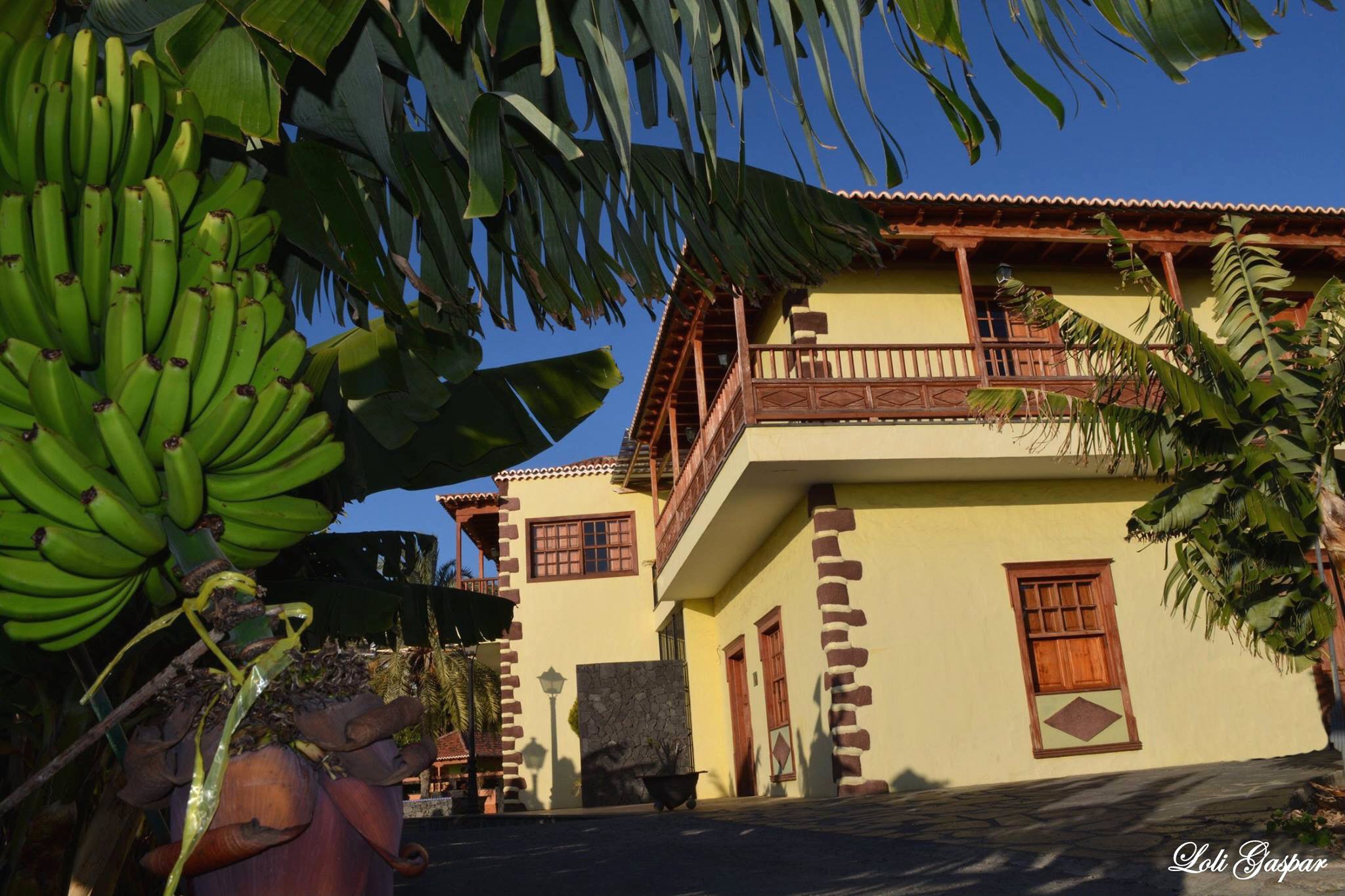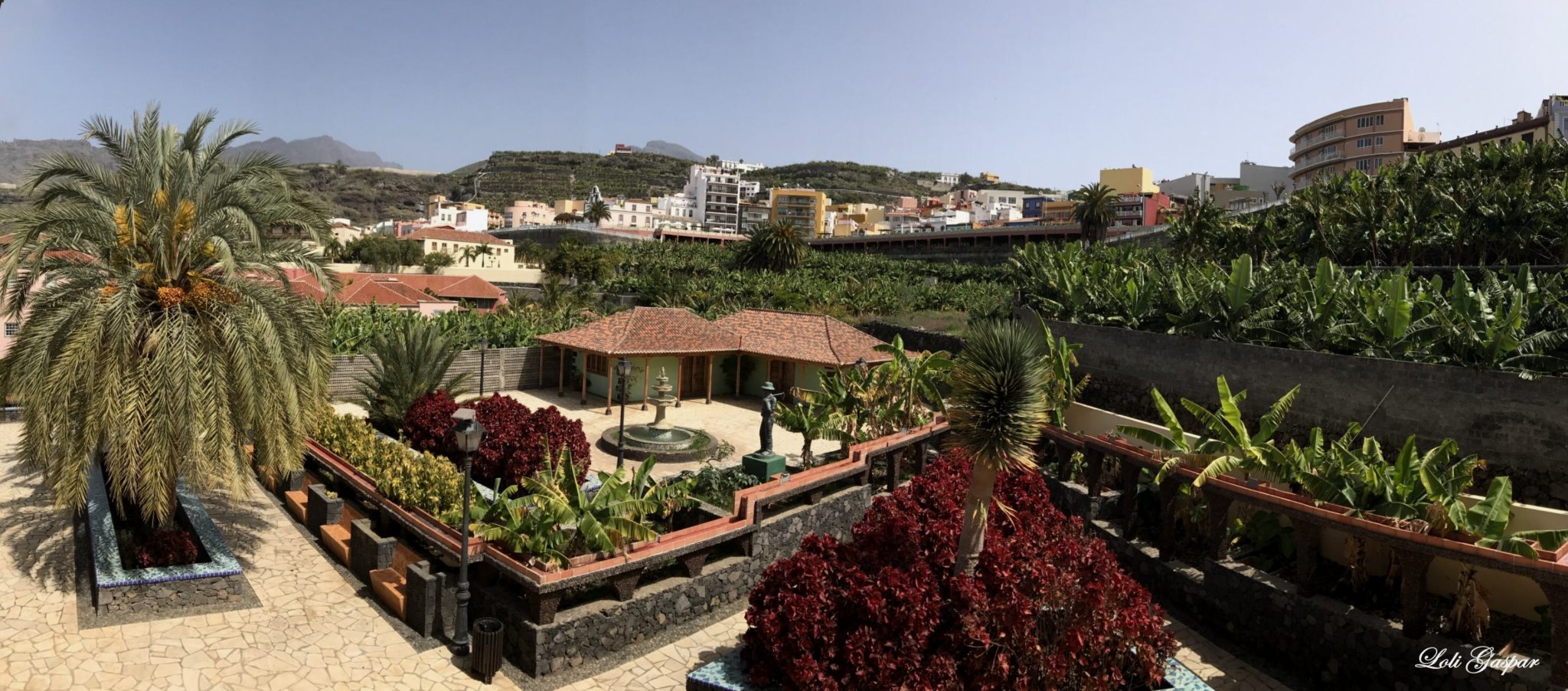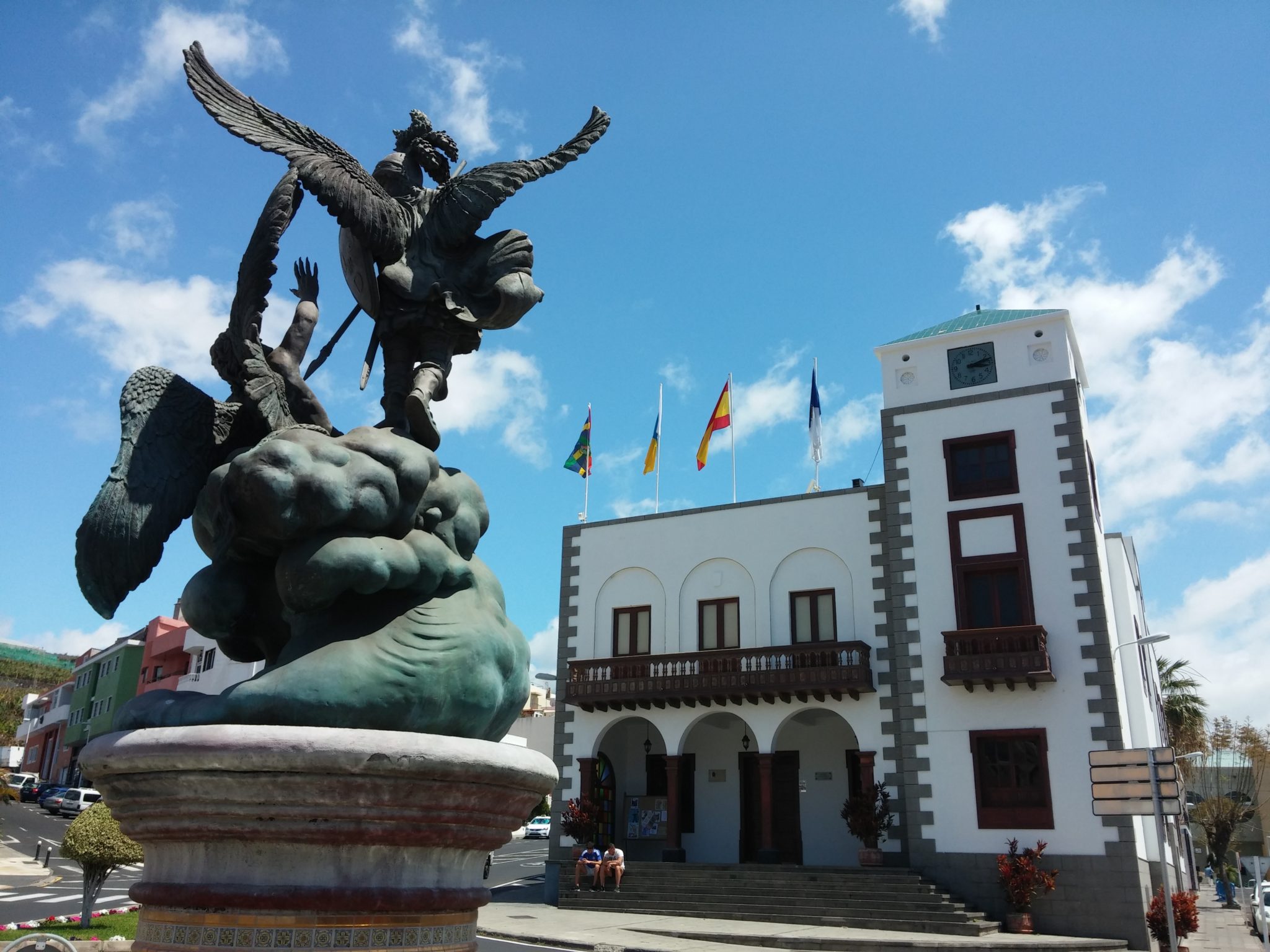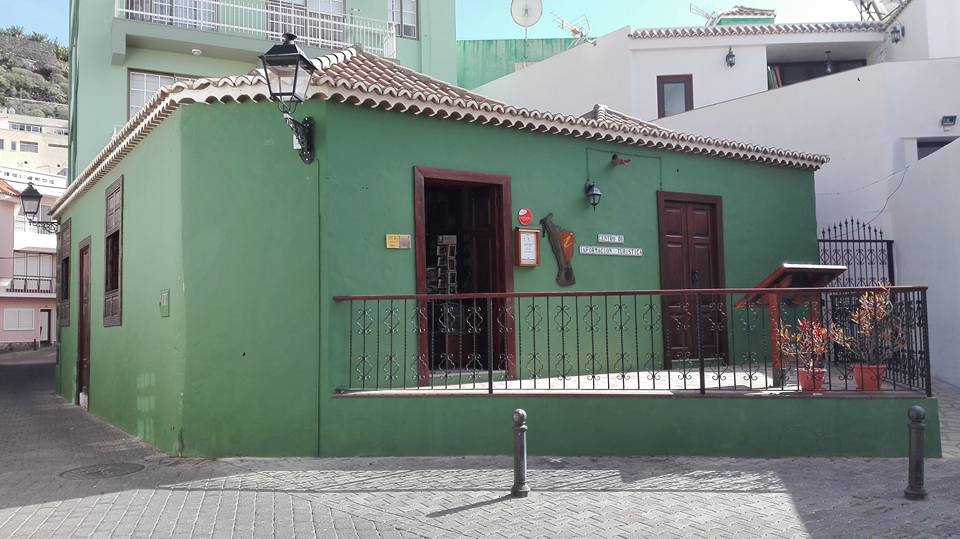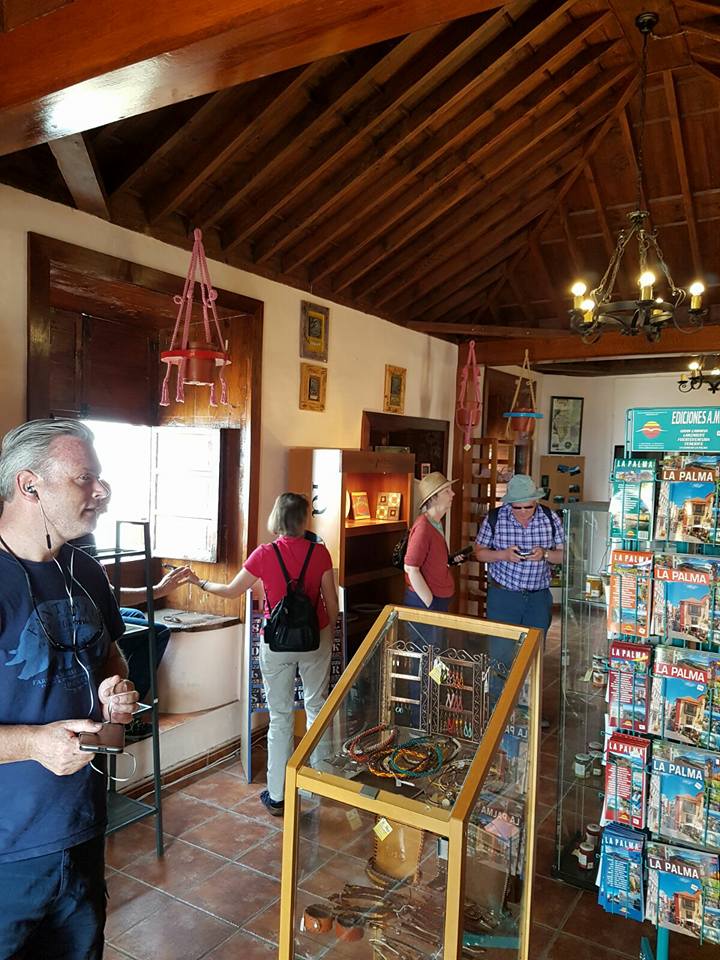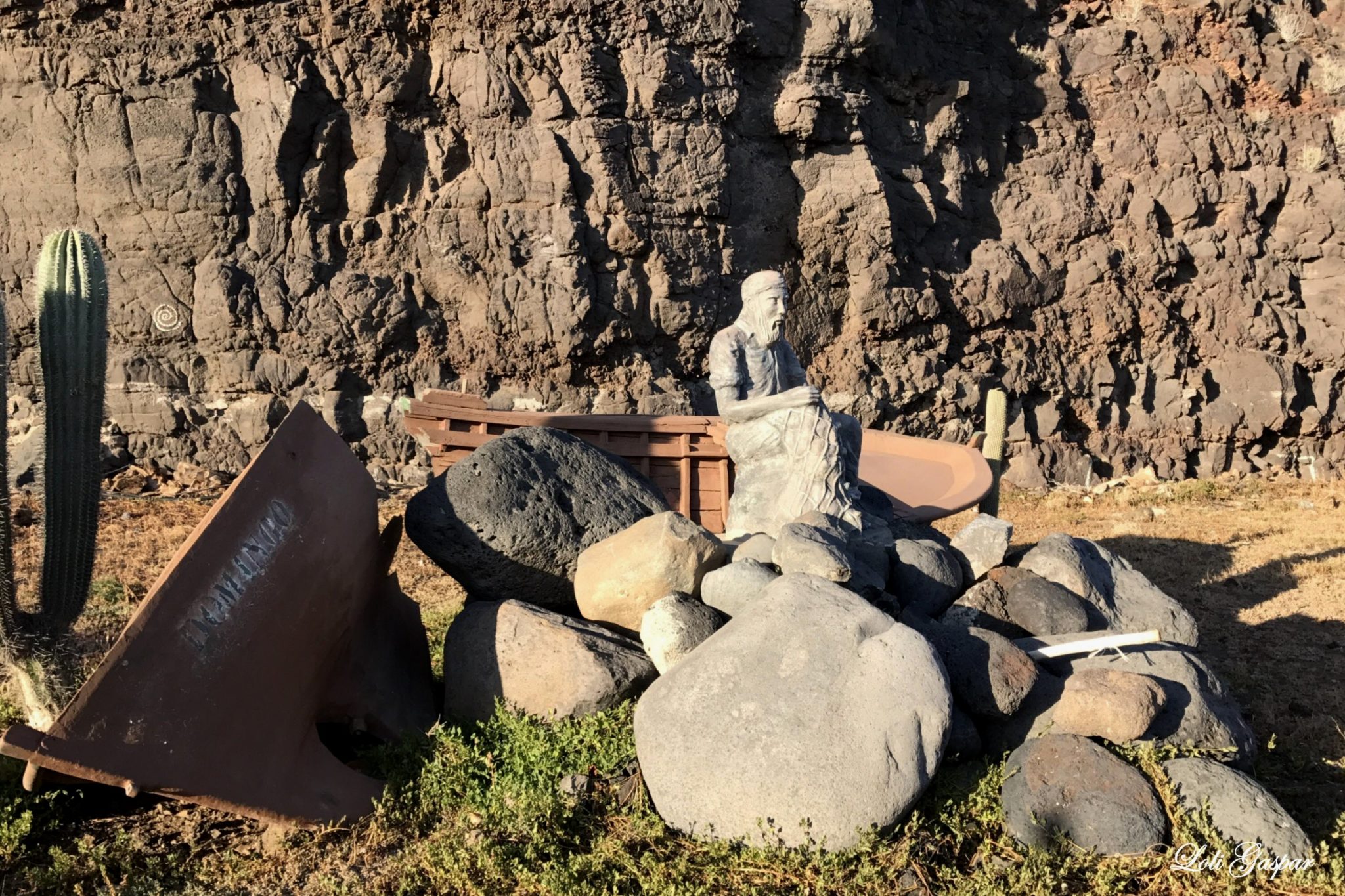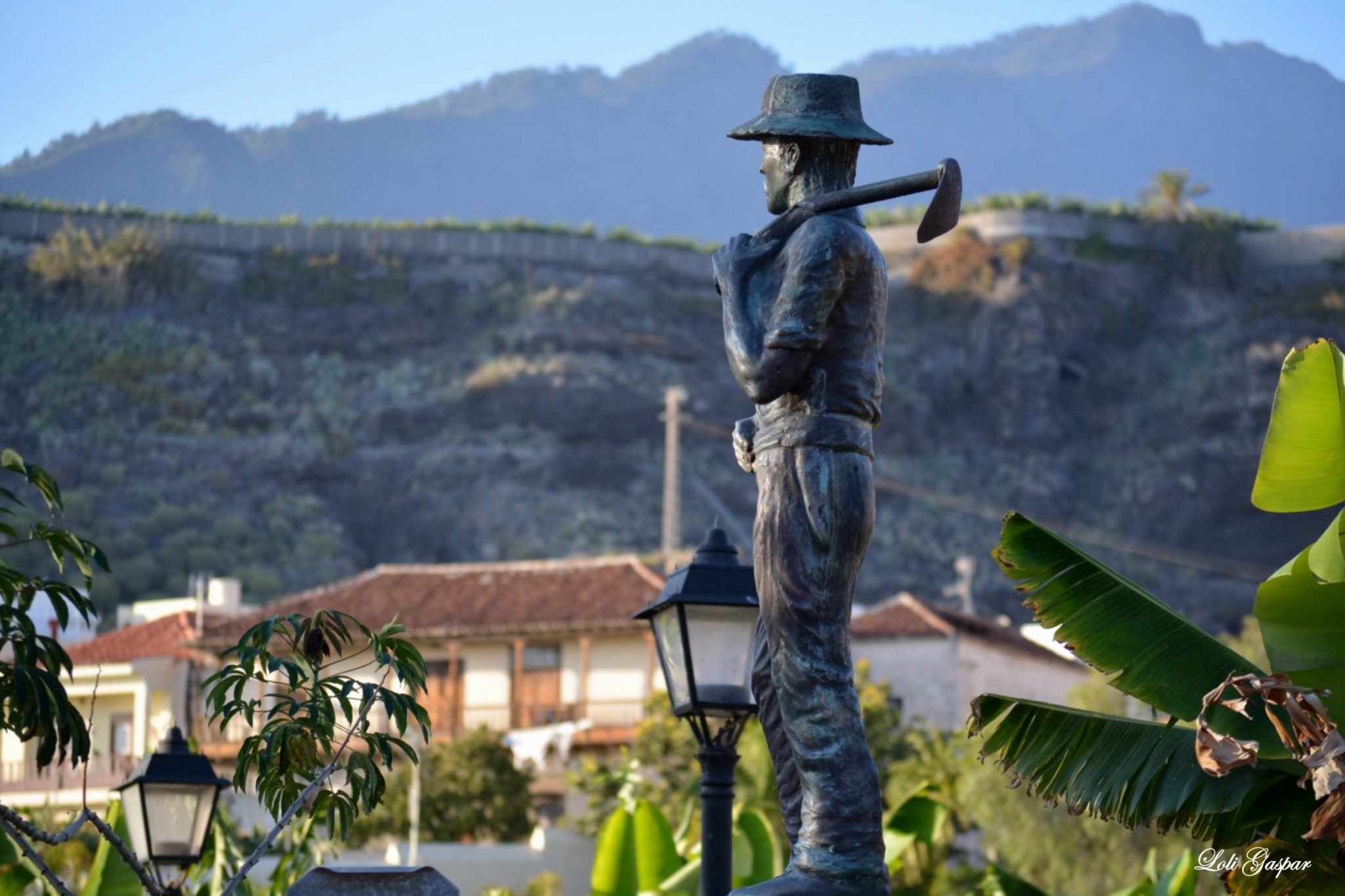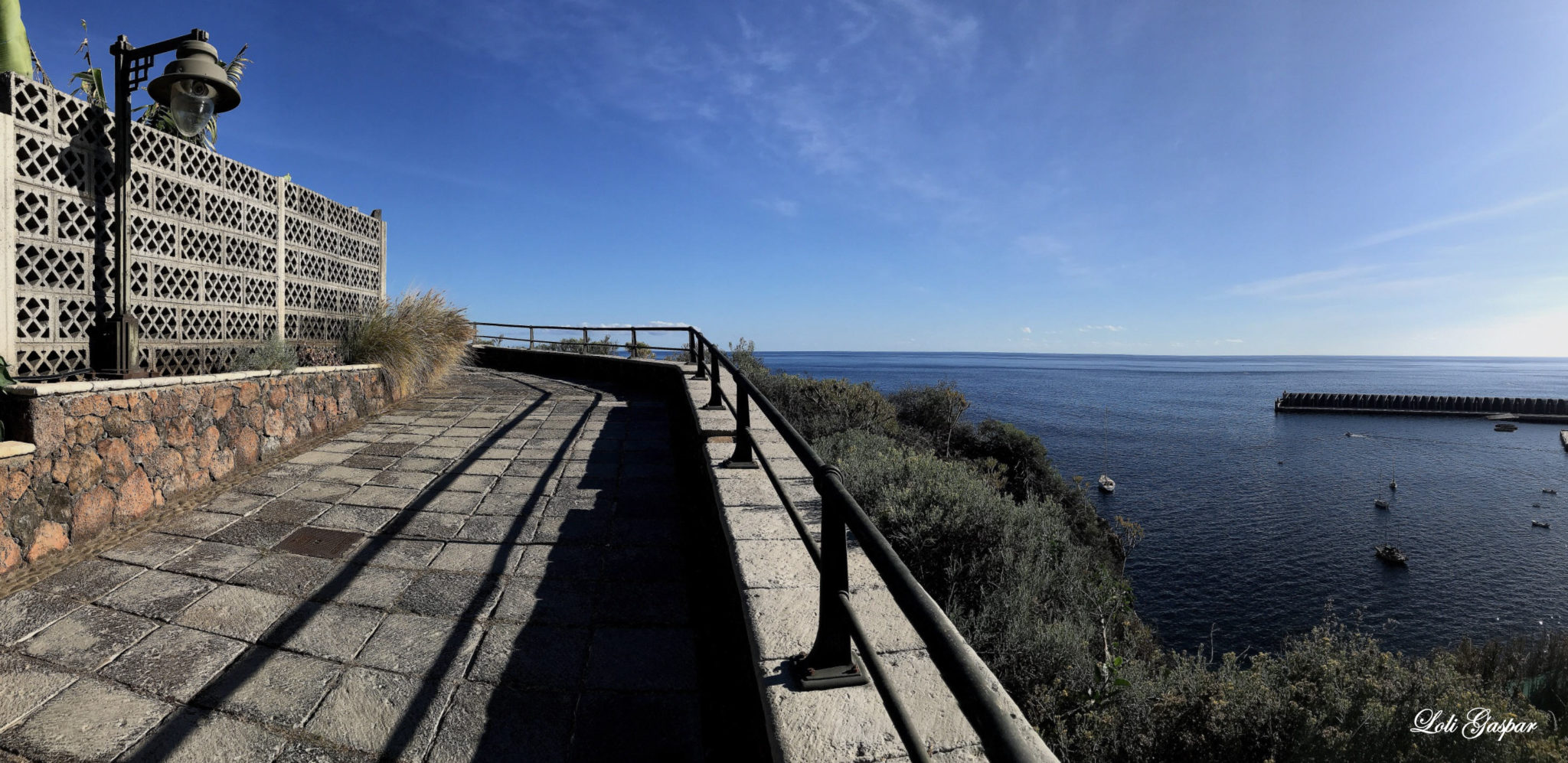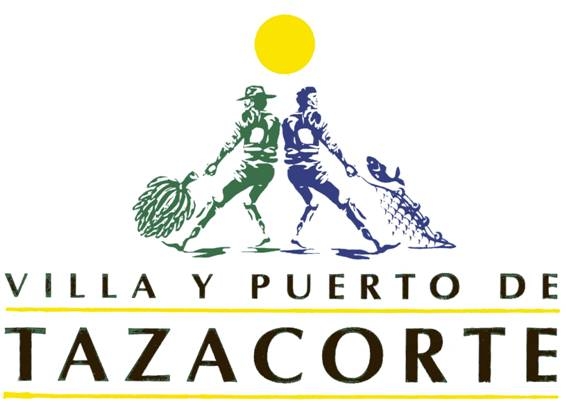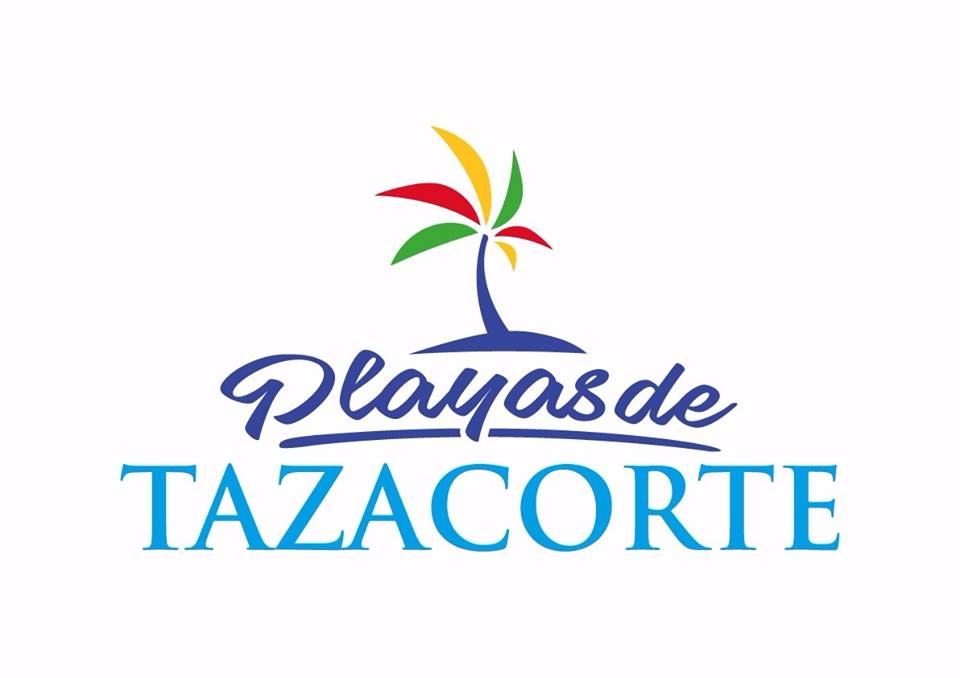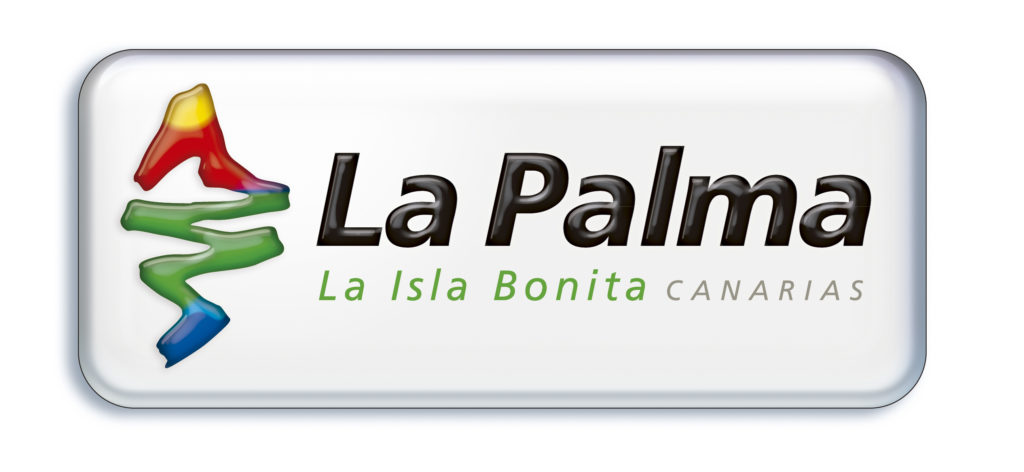Mainsights
Casa Almirante Díaz Pimienta
(Siglo XVI)
Stately house where Admiral Francisco DíazPimienta was born in the year 1594. During his brilliant military career heled the conquest of the Archipelagoof Santa Catalina and San Andres in the western Caribbean, seizing the power from the English. Admiral Diaz Pimienta is also considered one of the possible introducers of the banana plant on the Canary Islands.
Beautiful estate of typical Canarian architecture with a ‘bending’ balcony covering the whole facade. Its main access is on the back side, through a wall that closes the patio. In the stores and patio of this house the firm Pedro Suarez packaged the first plantains of the island for shipping to Santa Cruz de Tenerife and from there on to the English market, in 1896
Casa Massieu Monteverde y Ponte
(Siglo XVII)
Stately home built by Nicolas Massieu Van Dalle and his wife Angela de Monteverde y Ponte, when they married in 1666.
Its main feature is the beautiful crenelatedentrance gate of carved stonework. In the centre of the lintel is the family’s coat of arms, wrought in marble and with the symbols of the Massieu, Van Dalle, Monteverde and Ponte families. The house has an elongated rectangular floor plan with side patio and a staircase that ends in a balcony.
At present it is property of the Cabildo of La Palma, under shared management with the city council of Tazacorte, and it is used for cultural activities.
Los antiguos Lavanderos de Tazacorte
The `Lavaderos’ or public laundry place is located in the historical centre of Tazacorte. The water arrived here every fortnight, a period known locally as “Dula”, from a place called “Dos Aguas”. Initially this ‘Hacienda’ first watered the banana plantations of the upper boundary of Tazacorte and then continued to the Simon Guadalupe square, where the‘ Lavaderos’ were originally located, later being transferred to their current location.
From this square and through an underground canal, the water continues its course towards two mills and a sugar mill, to be used finally for the domestic hygiene of the inhabitants of Tazacorte in the Lavaderos that are situated today in the upper part of the former sugar mill. Such was the water flow once used by the women to do their laundry that it continued to serve as irrigation water for the banana plantations that stretched to the coast, a green landscapestill here today. The old waterway was so important that it even served as a distinction between two different residential points: the neighbourhoods of ‘Puente Arriba’ (above the bridge) and of ‘Puente Abajo’ (below the bridge), nowadays the El Charco neighbourhood. The lower part of the ‘Lavaderos’ was used for a long time as the municipal slaughterhouse. The entire complex was restored and rehabilitated in 1997.
Casa Monteverde o Casa de los Santos Mártires de Tazacorte
(Siglo XVI)
Originally owned by the Grünwald – Monteverdefamily (the last surname being a Castilianization of their original surname: Groenenberg), who came from Flanders during the reign of Charles V. The first family member, Jacob (known as Jacome de Monteverde), started the cultivation of sugar cane and sugar manufacturing and was the first importer of a sugar mill.
From 1700 onwards plantains were cultivated on their estate, replacing the cultivation of sugar cane as the most profitable one. Jacome de Monteverdealready was the owner of the ‘Haciendas’ of Argual and Tazacorte in 1509, which, after his death, were in herited by his five children. The Holy Martyrs of Tazacorte stayed in this house in 1570 and it is one of the oldest houses on the island.
Museo del Plátano
The Tazacorte Banana Museum, unique in Europe, contains a series of panels that cover each and every aspect of the cultivation of this crop, along with tools and pieces of daily use in the production process and harvest. On the ground floor there is a multipurpose room and a workshop for craft products made from the dry leaf of the banana stem (badana). Next to the museum lies the friendly Plaza del Museo del Plátano, with gardens where you can find the different types of banana plants that exist in the world.
Casa del Mojo y del Licor de Café
Next to the banana museum you find the recently opened Museum for Mojo and Coffee Liqueur, a gastronomic product of artisan elaboration very rooted in the culture of Tazacorte.
City council and sculpture of Saint Michael the Archangel
On the 16th of December of 1925, by Royal Decree of Alfonso XIII, Tazacorte became an independent municipality, when it was separated from Los LLanos de Aridane.
Since September 2007 Tazacorte boasts the bronze statue of the island’s patron saint which gives its full name to the island: San Miguel de La Palma.
On the El Morro Square, in front of the city council, is the `Conqueror of Satan’ sculpture, on a ceramic base and in the middle of a beautiful fountain. Floating on a cloud, Archangel Michael fights the devil with a lance, while putting his foot on top of him. The classic style sculpture by Luis Morera and Nathan Teusch, is 3.7 metres high.
Casa del Artesano
(Crafts Centre and Tourist Information Office of Tazacorte)
Located in a house of more than a hundred years old, just behind the San Miguel church, this centre was inaugurated in 2005.It is a place where local craftsmen can display and sell their products and where tourists can obtain all the necessary information about Tazacorte and its surroundings.
Opening hours:
Monday to Friday from 10 to 13.30, and from 16 to 18 hrs.
Saturday 10 to 13.30 hrs.
Escultura del Pescador
Located in the Puerto neighbourhood, this sculpture honours the fishermen of Tazacorte who were so important in the economic and cultural development of the town.
Escultura del Trabajador
This sculpture is located in the El Charco neighbourhood and honours the workers of the banana plantations of Tazacorte, for their importance in the cultural and economic development of this town.
The ‘Paseo del Litoral’
The ‘Paseo del Litoral’, or Coastal route, will eventually connect El Charco with San Borondon. The first phase of this project has already been carried out. The purpose of the project is to connect the village of Tazacorte with the area of Las Hoyas by means of a beautiful walkway along the coast, giving Tazacorte a characteristic balcony on the Atlantic.
